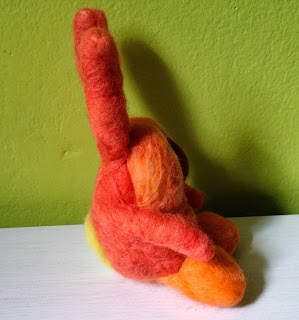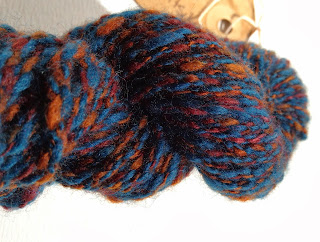Last year about this time I went to the very first Creativa Madrid and you can read about it here. When I went last year it was over-crowed and mostly full of sewing booths. Since I really should not get a sewing machine until we know what country we are going to settle down in, sewing booths are off limits for me, for fear that the desire to sew will be all consuming. It is very hard not to fall down that rabbit hole as I past by the Singer store almost every day.
Anyway, this year I was not going to go. But a friend offered me a ticket, so I offered to help in her booth and went on the first day (Thursday). This fair runs until Sunday so there is still time to go, if you want to.
Basically there is a lot of craft stores with booths from around Spain and even some from outside the country this year (I heard both a French and a British accent among the vendors). This fair is vastly different from the craft fairs that I am used to in the US, and some of the things they were selling seemed odd to me (animal figures to decoupage, and day-glow t-shirt yarn for some examples). I did not take a lot of pictures, because it is frowned upon to take pictures of the various booths (at least it was last year).
I also forgot to take a picture of the booth I briefly volunteered in, Indigo estudio Textil run by my friend and master weaver Lala and her husband Enrique. Lala brought wool to sell (in all it's forms), spindles, looms, books in Spanish about all sorts of crafts, and needle felting supplies. Below is what I bought from her booth. Those are felting needle holders, a single and a 4 prong. The single needle holder is a genius invention of simplicity and design. The yarn was made right here in Spain by a company, which is unfortunately, closed. Right now I am planning on using it to be the arms for a Ribbi Cardi. Last, but not least, the book! A book where I can study the terminology of needle felting is worth it's weight in gold to me! The projects are not too exciting, but I have a feeling that I will be reading this cover to cover.
Working at the booth while Lala was off teaching was an interesting experience. I have worked craft fairs and similar kinds of things before, and that is why I volunteered. What I did not remember, until the day before, was the potential language difficulties. I am not sure if that is a good thing or a bad thing. I am tired of my Spanish holding me back from experiencing the life I want. There is a disheartening moment as an immigrant when you realize that you will never know the language like a native. No matter how long you live somewhere there will always be a phrase you don't know or someone will mutter and because you did not hear what they said, based on your accent they will think that you do not understand. It is disheartening. But I have a working knowledge of the vocabulary I can get by, I need to get out there and have the confidence to speak more freely. All-in-all I am very proud of myself for being able to do it and I am glad that I did.
OK, on to yarn. I found my favorite yarn store in Spain. This is huge, no only do I hardly ever buy yarn in Spain because of the selection and the materials available. I know of several other ex-pats that buy out-of-country so I know I am not alone. I love supporting local shops. So, the name of this store? Vega knits. Based in Malaga they are an online shop (although I have heard rumors of them looking for a brick and mortar store). They are the only store in Spain (that I know of) that carries MadelineTosh (the two skeins on the left are MadelineTosh, aren't they gorgeous? Click to enlarge.) They also carry Blue Sky Alpaca, Spud and Chloë, and last but not least, Avril, a Japanese yarn company. Avril has some really neat yarns. I wish that I could have bought them all, but I did buy three different kinds. The yellow one looks and feels like paper yarn, but it is cotton! It is almost like a ribbon yarn, if the ribbon yarn was made out of paper. The small red skien is a beautiful lace weight tweed silk. And the small little cone is wool and stainless steel in an olive color. I have always wanted to try a wool and stainless steel combo. The woman who ran the store was very nice, and bonus for all of you, spoke English (wish she insisted on speaking to me) very well.
I also got roped into a presentation about Magic Crayons. I almost did not get them, until I saw that you could add oil to them and paint with them too (see the purple bit in the ballon on the lefthand piece.) I am not sure what oil that they used and the website is not super helpful, but you can see almost the same presentation that I got, only in Italian! It works on wood and glass, and they do not get your hands dirty! I love all thing new and inventive in art tools, so I had to buy them.
So tthose are my thoughts on this year's Creativa Madrid. I recommend going. The selection and the creativity of this year's show is far better than last year, Also there is more "pura lana" at Creativa than there was at Nomada Market. ;)













































